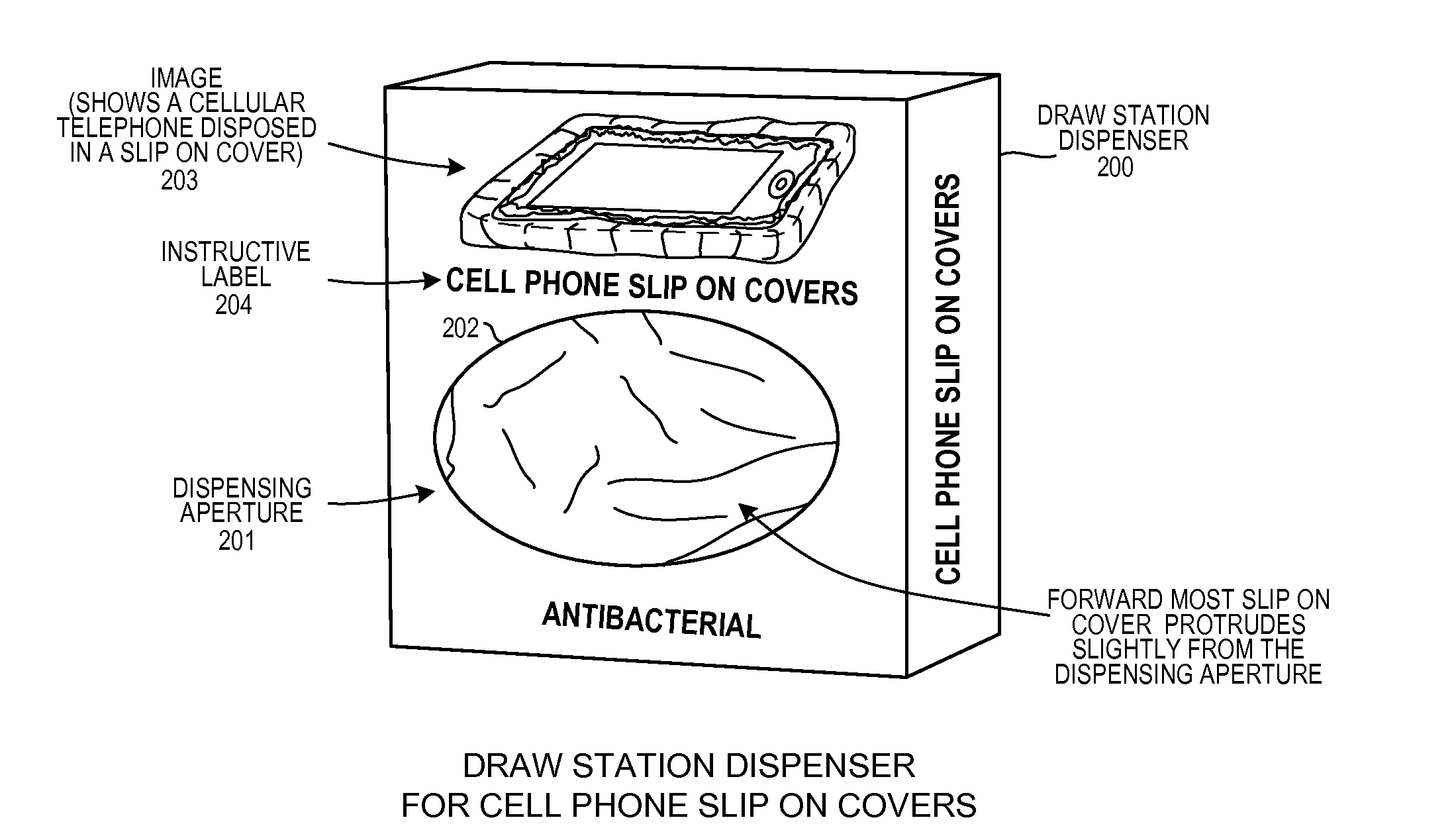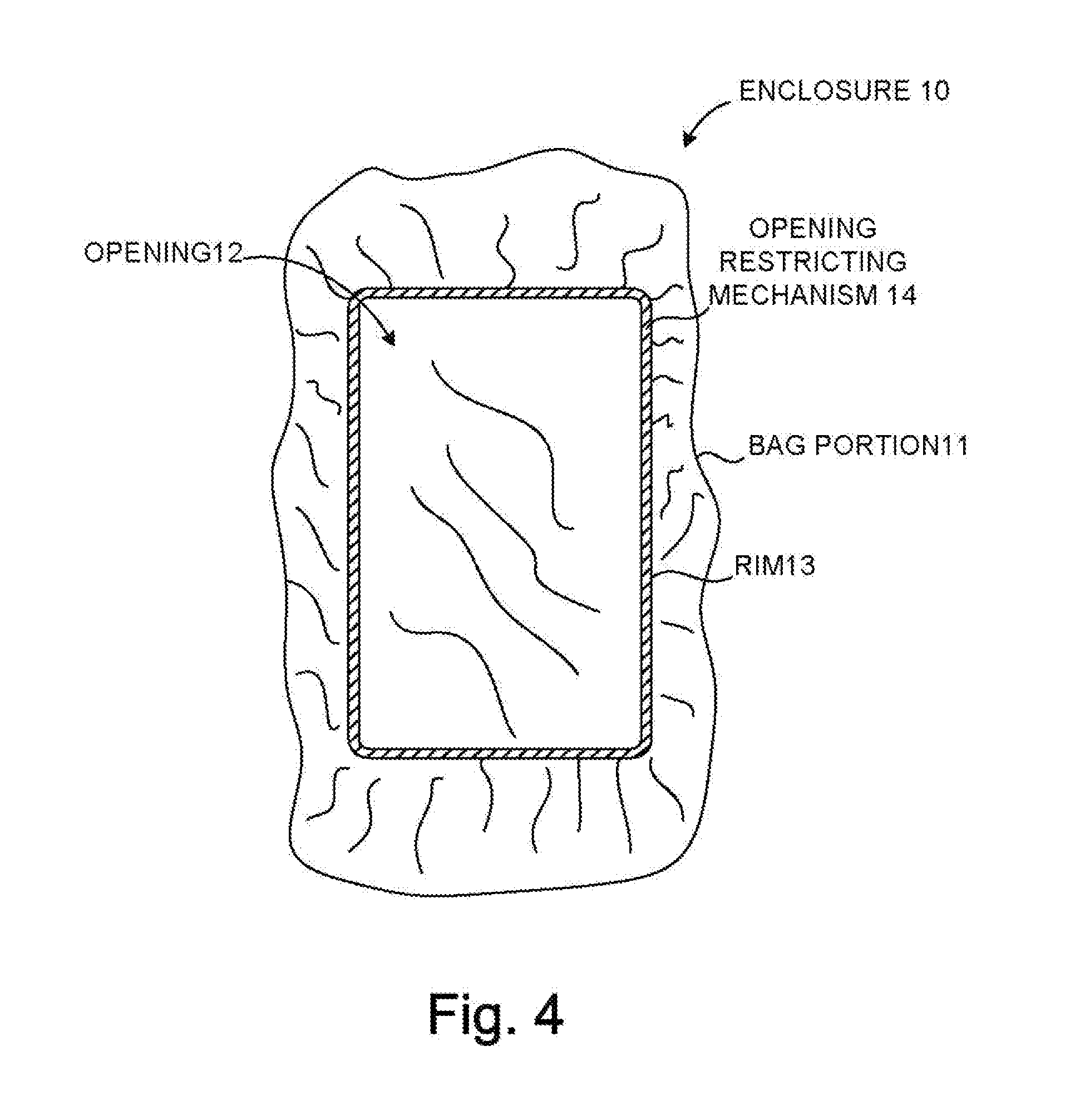Enclosure And Method For Prevention Of Health-Care-Associated Infections From Contaminated Devices
a technology for preventing healthcare-associated infections and containing them, which is applied in the direction of flexible container closures, packaging goods types, shock-sensitive articles, etc., can solve the problems of health-care-associated infections, x-ray machines may be contaminated by hand or other bodily contact, and the surface of hospital beds may become contaminated by microorganisms, etc., to prevent the spread of infectious agents, prevent health-care-associated infections, and inexpensively manufactured
- Summary
- Abstract
- Description
- Claims
- Application Information
AI Technical Summary
Benefits of technology
Problems solved by technology
Method used
Image
Examples
Embodiment Construction
[0037]Reference will now be made in detail to some embodiments of the invention, examples of which are illustrated in the accompanying drawings.
[0038]FIG. 4 is a drawing of an enclosure 10 in accordance with one novel embodiment. Enclosure 10 has a bag portion 11, an opening 12, a rim 13, and an opening restricting mechanism 14. The opening 12 of bag portion 11 is defined by rim 13 at the periphery of bag portion 11. The opening restricting mechanism 14 is disposed along the rim 13 of opening 12 of bag portion 11. The opening restricting mechanism 14 in the novel embodiment of FIG. 4 is an elastic band. The elastic band provides for enlarging or reducing the size of opening 12 of bag portion 11. In other embodiments, the opening restricting mechanism 14 includes a drawstring or another suitable mechanism that provides for the enlargement or reduction of opening 12 of bag portion 11.
[0039]Bag portion 11 is made of a flexible plastic sheet material. The flexible plastic sheet material...
PUM
| Property | Measurement | Unit |
|---|---|---|
| thickness | aaaaa | aaaaa |
| thickness | aaaaa | aaaaa |
| area | aaaaa | aaaaa |
Abstract
Description
Claims
Application Information
 Login to View More
Login to View More - R&D
- Intellectual Property
- Life Sciences
- Materials
- Tech Scout
- Unparalleled Data Quality
- Higher Quality Content
- 60% Fewer Hallucinations
Browse by: Latest US Patents, China's latest patents, Technical Efficacy Thesaurus, Application Domain, Technology Topic, Popular Technical Reports.
© 2025 PatSnap. All rights reserved.Legal|Privacy policy|Modern Slavery Act Transparency Statement|Sitemap|About US| Contact US: help@patsnap.com



